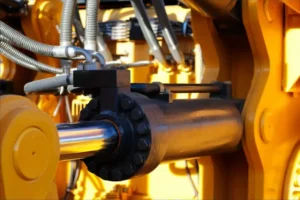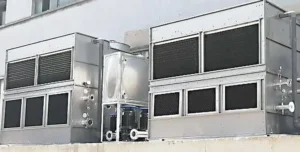The main requirements of a heat treatment furnace depend on the specific heat treatment process being used.
1. Temperature Control and Stability
- Precise Temperature Regulation: The furnace must maintain a stable, accurate temperature to ensure uniform heat treatment. The temperature must often be adjustable over a wide range, depending on the material and process (على سبيل المثال, annealing, hardening, هدأ).
- Uniform Heat Distribution: A well-designed furnace ensures that the heat is distributed evenly throughout the chamber, preventing hot spots or cold zones that could lead to inconsistent treatment.
2. التحكم في الغلاف الجوي
- Oxidation Control: Many heat treatment processes require a controlled atmosphere to prevent oxidation or decarburization. This can be achieved by using inert gases, reducing gases (such as hydrogen or nitrogen), or vacuum chambers.
- Gas Flow and Ventilation: Proper gas circulation is important to maintain the desired atmosphere and prevent contamination of the material being treated.
3. Insulation and Energy Efficiency
- High-Quality Insulation: To maintain the temperature within the furnace and minimize heat loss, high-efficiency insulation materials (على سبيل المثال, ceramic fiber or refractory bricks) are essential.
- كفاءة الطاقة: Given the high energy consumption of heat treatment furnaces, energy-efficient designs such as regenerative burners, high-efficiency heating elements, or insulated enclosures can help reduce operational costs.
4. Heating Elements
- Appropriate Heating Elements: The furnace must be equipped with the appropriate type of heating elements, such as resistance coils, gas burners, or induction heating systems. The choice depends on the required temperature range and uniformity.
- Durability: Heating elements should be capable of withstanding high temperatures and the physical stresses associated with heat treatment operations.
5. Loading and Unloading Mechanisms
- Ease of Loading/Unloading: Depending on the size of the parts being treated, the furnace should have mechanisms for easy loading and unloading of materials (على سبيل المثال, conveyors, lifting equipment, or automated robotic arms).
- Batch or Continuous Operation: The furnace design may need to accommodate either batch processing (for smaller runs) or continuous processing (for larger, more automated operations).
6. Control and Automation Systems
- Programmable Controllers: The furnace should be equipped with advanced control systems to monitor and regulate temperature, atmosphere, and process parameters. This allows operators to program specific heat treatment cycles (على سبيل المثال, ramp-up, soak, and cool-down stages).
- أمان سمات: Automated systems should also include safety protocols, such as over-temperature alarms, gas leak detection, and emergency shutdown capabilities.
7. Capacity and Size
- Adequate سعة: The furnace should be sized appropriately for the volume and size of the material to be treated. It should have enough space to accommodate parts without compromising heat uniformity.
- Customization for Specific Materials: Some heat treatment furnaces are tailored for particular materials (على سبيل المثال, فُولاَذ, الألومنيوم, or titanium), and their design may need to reflect the specific requirements of those materials.
8. أنظمة التبريد
- Efficient Cooling: After heat treatment, materials often need to be cooled rapidly or slowly, depending on the process. The furnace should have the appropriate cooling systems, such as forced air, oil quenching tanks, or water baths, to achieve the desired cooling rate.
9. اعتبارات السلامة
- Thermal أمان: Furnaces should be equipped with safety measures like fire-resistant materials, automatic shutoff valves, and temperature sensors to avoid overheating.
- Toxic Gas Ventilation: In certain heat treatment processes (على سبيل المثال, carburizing, nitriding), gases can be harmful, so proper ventilation and gas extraction systems are critical.
10. Maintenance and Durability
- Ease of صيانة: The furnace design should allow easy access to components like heating elements, fans, and controls for routine maintenance, cleaning, and repairs.
- Durable Construction: Heat treatment furnaces are subjected to extreme temperatures and physical wear, so durable construction materials are necessary to prolong the lifespan of the furnace.
Meeting these requirements ensures that the heat treatment furnace operates efficiently, provides consistent results, and maintains safety standards.







